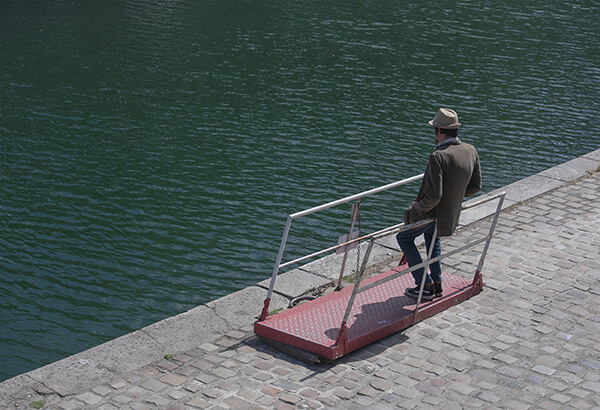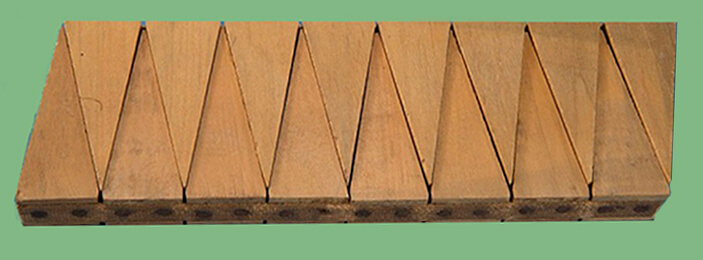Contemplative life for all Christians!
Welcome to the Stillness at Home website about contemplative life for all Christians and making your home a sanctuary. You will learn what contemplative life is, its meaning, and how to do lectio divina. This first and main post is the definition of contemplative life and how to begin contemplative life.
In the Spirit of the desert fathers and mothers, Saint John Cassian, Saint Benedict, Saint Gregory Palamas, Saint Teresa of Avila, the Philokalia, and Abbess Cécile Bruyerè, OSB, I welcome you as Christ.
StillnessAtHome.com was launched on Easter Sunday, 2023.
CONTENTS OF THIS PAGE
Intended Audience— The percentage of the population in western cultures who become monastics (monks, nuns, and sisters) is very small, perhaps the lowest it has been in the last 1700 years. A more alarming sign is that the percentage of the lay population in western cultures who live a quiet, contemplative away from the world’s distractions is perhaps the lowest since Jesus taught large crowds, “Blessed are the pure in heart, for they shall see God.”
This website is for those who come here on that journey.
Contemplative Life Definition — Seven aspects of a life in God. It takes all your heart, soul, mind, and strength. But you gladly give all in love.
Questions About Contemplative Life — If these are not your questions, please ask them in the comment section at the bottom of the page, and I will add them.
First Books for Contemplative Life — You will make your way easier and with more assurance if you read these books — or ones just as good from among the holy church fathers.
What is the main point of this website? —You can read this, do it, and skip everything else!
Principles of the Definition —These principles are like handrails along a path. They keep us on the path and clear of stumbling stones and thorns.
Only by God’s Gift — God’s gift is available to everyone. So continue to persevere. You know there is a way to God, everything you see around you says God wants you to be with him. He even provides the way.

Intended Audience
I hope every visitor finds something helpful, even if it confirms they don’t want anything to do with contemplative life — at least not now! But I have a particular audience in mind.
First, as mentioned on the Home Page, this site is for those on the journey to dwell with God. It is written for Christians who know as a fact the Nicene-Constantinopolitan symbol of faith (the creed) is the truth and who desire to live closer to God in that truth. That means there won’t be many posts on theology, institutional church disputes, or religious politics.
Second, posts are related to contemplative life for those with a spouse, an active family (often with grandchildren), a job, and more Christian books than they have room for in the house. Could that group include people new to the faith who want to learn more about Christian doctrines? Sometimes. It is true that spiritual space created by avoiding the world is a good environment for new Christians.
But one reason this site may appeal to older Christians is they have seen more of the world, there’s little they have not done. They say, “I used to want freedom to live like the world. Now I want freedom from the world.”
Stillness at Home focuses on writings of early Christians and the long tradition that contemplative life is for all Christians — for lay people too! Sadly too many people think contemplative life is wrongly considered a way of life only for monks, sisters, and nuns.
Every Christian should know Jesus calls all to perfection. There are not two standards, one for priests and those in consecrated life (monks, sisters, nuns) and another lower standard for lay people. And contemplative life as a lay person is easier than you think!
What is the main point and idea of this site?
Here it is:
“A brother came to Scetis [an area of Egypt where thousands of monks lived beginning in the AD 300s] to visit Abba [Father] Moses and asked him for a word [a way to live]. The old man said to him, ‘Go, sit in your cell, and your cell will teach you everything.’” From “The Sayings of the Desert Fathers,” translated by Benedicta Ward, SLG, 1975.
For many people in western culture, that advice is best realized in the stillness of their homes and in a reordered life. Contemplative life is for all Christians because every home can be made a sanctuary and protected from the world’s noise and messages.
Everything else I add to this website could be a footnote to Abba Moses’ advice.
CONTEMPLATIVE LIFE DEFINITION
To get started on the first “footnote” here is the general definition of contemplative life I use.
A contemplative life:
+ Desires God more than anything else.
+ Works to be free from the world’s distractions.
+ Follows elements of traditional monastic practice.
+ Reorders life toward God alone.
+ Seeks purity of heart.
+ Continues on a personal spiritual journey as one’s state in life allows.
+ Begins dwelling with God now as in heaven forever.
Saint John Chrysostom said, in speaking about baptism, but it applies to all who wish to live in that renewal and reorder their lives for that light:
“For he who is about to approach these holy and dread mysteries must be awake and alert, must be clean from all cares of this life, full of much self-restraint, much readiness; he must banish from his mind every thought foreign to the mysteries, and on all sides cleanse and prepare his home, as if about to receive the king himself. Such is the preparation of your mind: such are your thoughts; such the purpose of your soul.”
Chrysostom, John. “The Complete Works of Saint John Chrysostom.” (Kindle Locations 151096-151100).
There’s another factor as we explore reordering how we live toward God. It’s how we think and talk about it. Seems obvious, but there is something more. We will encounter an irony: As we consider the seven elements in greater depth the more imprecise the concepts become. The closer we look with our eyes and mind, the less we see. We enter the realm of uncreated light, of illumination, and God’s grace. In the realm of mysticism we need a different way to see.
Fortunately, the holy fathers and mothers show us how to see with the eye of our heart — the nous. How that is accomplished is also part of this website.
With that overview, lets move right into the principles related to the seven elements. That helps us stay on track.

|
Not steps. This is different. |
PRINCIPLES OF THE DEFINITION
PRINCIPLE 1. Those seven items are not steps. We don’t start with the first item and work our way to the goal of dwelling with God.
Each segment is better thought of as parts of a circle which might be arranged in a different sequence and in different proportions depending on the person and their state in life at a particular time — raising children or on a weekend, for example.
A person’s life might enter the circle and experience the segments in this sequence:
+ Begins dwelling with God now as in heaven forever.
+ Seeks purity of heart.
+ Desires God more than anything else.
+ Works to be free from the world’s distractions.
+ Reorders life toward God alone.
+ Continues on a personal spiritual journey as one’s state in life allows.
+ Follows elements of traditional monastic practice.
PRINCIPLE 2. There is a mystical dimension in the seven segments. The holy church fathers use metaphors when writing about the mysticism. Metaphors can have a part that helps convey the truth and a part that should not be applied literally. Contemplative life needs the discretion to know which is which.
Contemplative life is a way to become free of the world’s influence and bring our nous (eye of the heart) back to its place in the heart so we are not foreclosed to God’s work (the mystical).
PRINCIPLE 3. Contemplative life is more about how we live rather than what we know. We must know the truths of Christianity, but contemplative life is living closer to God before learning more theology.
Knowledge in contemplative life is experienced.
Those experiences come through purification, illumination, and deification/unification. But everyone’s state in life allows different ways in which those elements are lived.
“Hieromonk [monk and priest] Gabriel Bunge (1940- ) is a renowned Swiss theologian and Patristics scholar who was formerly a Roman Catholic [monk and priest] in the Order of Saint Benedict (OSB).” Source
As a Catholic Benedictine, Father Gabriel followed the Rule of Saint Benedict (a Rule of prayer). In 2010 Father Gabriel converted and joined the Russian Orthodox Church (not Catholic). But he still follows the Rule of Saint Benedict written about AD 530 about 500 years prior to the split of the Church into the primarily Catholic west and Orthodox east.
The point of this information on Father Gabriel is that even for the most advanced monks there is individuality in the forms of monastic practice while remaining anchored in its essentials and spirit.
Father Gabriel wrote what many say is the best book on The Rublev Trinity icon. “As a Patristics scholar Father Gabriel has contributed numerous articles and books to spiritual and monastic journals, particularly on Evagrius Ponticus.” Source
What does Father Gabriel say about the importance of how we live?
He said, “Someone studying theology without the spiritual life will understand nothing.” From Theological Study, the Spiritual Life, and Russia Today: A Conversation with Fr. Gabriel (Bunge).
Another modern theologian, Vladimir Lossky, said, “…[T]he teaching of the Church would have no hold on souls if it did not in some degree express an inner experience of truth, granted in different measure to each one of the faithful. There is, therefore no Christian mysticism without theology; but, above all, there is no theology without mysticism…Mysticism is accordingly …the perfection and crown of all theology.” Lossky, Vladimir. “The Mystical Theology of the Eastern Church,” Saint Vladimir’s Seminary Press, 1976.
PRINCIPLE 4. It may also be helpful to see contemplative life as four activities and three phases:
Activities:
Pray, Listen, Read, Work
Phases: (not steps but segments like of a circle)
Purification, illumination, deification/unification.
PRINCIPLE 5. It is not correct to think the material world is the foundation of reality to which is added a separate, distant, immaterial (spiritual) realm. The material realm is temporary and exists within the larger and permanent spiritual world. Reality is unified, the material is closely connected to its origins in the spiritual realm. The material realm is not isolated from the spiritual. We might say the spiritual holds the material together.
Our soul, heart, and body are closely connected to our origins in the spiritual. Our lives were created to be at home in the one full and complete reality and not isolated from the spiritual as the darkened world would have you believe.
God is the creator of the heaven and earth and we are made to dwell with him forever.
QUESTIONS ABOUT CONTEMPLATIVE LIFE
Question: Is contemplative life the only way to live as a Christian?
Not the only way, but one
with a great track record
Answer: No. There are other ways. Contemplative life was common among the earliest Christians.
However, at the core of Christian life in the Orthodox Church is the practice of hesychasm (stillness or divine quietness) as part of a life directed to purification, illumination, and deification/unification with God. This is the holy life and is the path of many saints.
The topics of illumination and deification/unification are examples of metaphors because some parts of those concepts are ineffable. Another example is the “the prayer of the heart” and “mysticism of the heart” discussed in this article from the Greek Orthodox Archdiocese of America.
Slow and easy is not difficult,
and it’s the best way
For the lay person in the modern western world, the strict ascetic rigors common among monks and nuns in the AD 300s are not necessary in my opinion for reasons I will mention in a future post. The Eastern Orthodox traditions have deep roots in the spiritual life.Of course there is nothing wrong with a lay person today following those strict practices, but the different conditions of modern life are better suited to a slow and easy process of loosening the world’s tightly constricted entanglements that bind the modern heart. That process is most effective at working directly to untangle the knots.
No
and never was
Purity of heart
is first
In every
area of life
Every day and
until our last breath
God helps
Yes,
that did it!
Never
There are more
important tasks
In stillness

FIRST BOOKS FOR CONTEMPLATIVE LIFE

ONLY BY GOD’S GIFT
“So, as I have said, we have to combine continual and diligent prayer with the seemingly good desire which is awakened in us, saying, every one of us: May it be Thy will regarding me, to accomplish in fact this good which I have chosen and which I desire to practice, if it concords with Thy will. To fix my will on it, is easy to me; to practice it, is however not possible for me without a gift on Thy part.” A. J. Wensinck with Isaac of Nineveh, “Mystic Treatises” (Amsterdam: Koninklijke Akademie Van Wetenschappen, 1923), 296.


I just found your site! Most entries were from BDP of 2010. Do you still write about this? Loved your ideas on the tabs and cardstock sheets. Im going to do that. However, my page numbers dont mesh with yours. Im using BDP second edition. Perhaps you used the first edition
thank you for all this beneficial work ❤️
Hi Lindy, I apologize for the tardy approval of your comment. Yes, I have the Benedictine Daily Prayer copyright 2005. The BDP is an excellent way to follow the tradition and patterns of Rule of Saint Benedict.
In my personal prayer I now use a tablet with Sir Lancelot Charles Lee Brenton’s 1851 English translation of the Septuagint Psalms arranged according to the Rule of Saint Benedict with a few additional elements — nothing as extensive as the beautiful readings and other elements in the BDP. The file is a bookmarked PDF allowing me to quickly get to the appropriate day and office. I use the Moon Reader Pro app to read the PDF and use Moon Reader’s automatic scrolling so I don’t have to exhaust myself turning the pages!
I started this new website, StillnessAtHome.com, in which I write about breaking free from the distractions of the world. And an essential part of that life away from the world is having a rule of prayer. The BDP is a wonderful book to use in anyone’s contemplative life.
As I write more about the contemplative life, I should include much from the older site, including the BDP.
Thanks again for your comment.